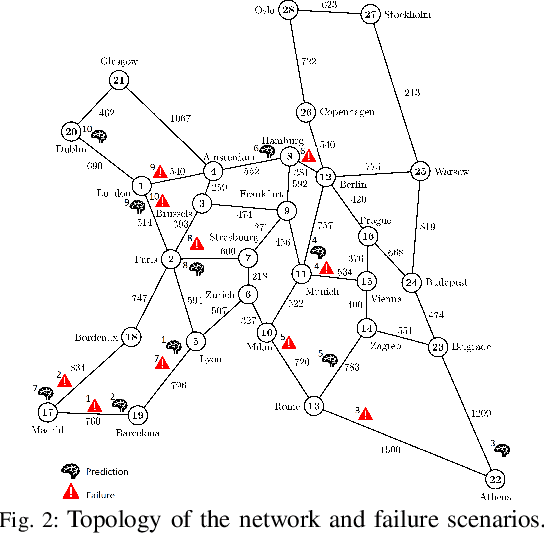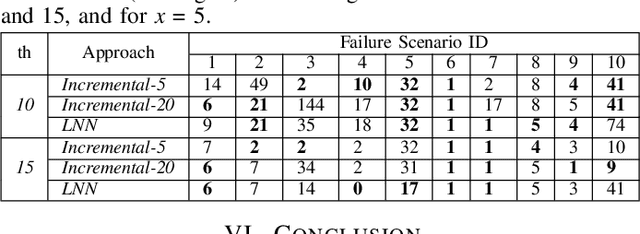Róża Goścień
Liquid Neural Network-based Adaptive Learning vs. Incremental Learning for Link Load Prediction amid Concept Drift due to Network Failures
Apr 08, 2024



Abstract:Adapting to concept drift is a challenging task in machine learning, which is usually tackled using incremental learning techniques that periodically re-fit a learning model leveraging newly available data. A primary limitation of these techniques is their reliance on substantial amounts of data for retraining. The necessity of acquiring fresh data introduces temporal delays prior to retraining, potentially rendering the models inaccurate if a sudden concept drift occurs in-between two consecutive retrainings. In communication networks, such issue emerges when performing traffic forecasting following a~failure event: post-failure re-routing may induce a drastic shift in distribution and pattern of traffic data, thus requiring a timely model adaptation. In this work, we address this challenge for the problem of traffic forecasting and propose an approach that exploits adaptive learning algorithms, namely, liquid neural networks, which are capable of self-adaptation to abrupt changes in data patterns without requiring any retraining. Through extensive simulations of failure scenarios, we compare the predictive performance of our proposed approach to that of a reference method based on incremental learning. Experimental results show that our proposed approach outperforms incremental learning-based methods in situations where the shifts in traffic patterns are drastic.
Traffic-Aware Service Relocation in Cloud-Oriented Elastic Optical Networks
May 17, 2021



Abstract:In this paper, we study problem of efficient service relocation (i.e., changing assigned data center for a selected client node) in elastic optical networks (EONs) in order to increase network performance (measured by the volume of accepted traffic). To this end, we first propose novel traffic model for cloud ready transport networks. The model takes into account four flow types (i.e., city-to-city, city-to-data center, data center-to-data center and data center-to-data center) while the flow characteristics are based on real economical and geographical parameters of the cities related to network nodes. Then, we propose dedicated flow allocation algorithm that can be supported by the service relocation process. We also introduce 21 different relocation policies, which use three types of data for decision making - network topological characteristics, rejection history and traffic prediction. Eventually, we perform extensive numerical experiments in order to: (i) tune proposed optimization approaches and (ii) evaluate and compare their efficiency and select the best one. The results of the investigation prove high efficiency of the proposed policies. The propoerly designed relocation policy allowed to allocate up to 3% more traffic (compared to the allocation without that policy). The results also reveal that the most efficient relocation policy bases its decisions on two types of data simultaneously - the rejection history and traffic prediction.
 Add to Chrome
Add to Chrome Add to Firefox
Add to Firefox Add to Edge
Add to Edge